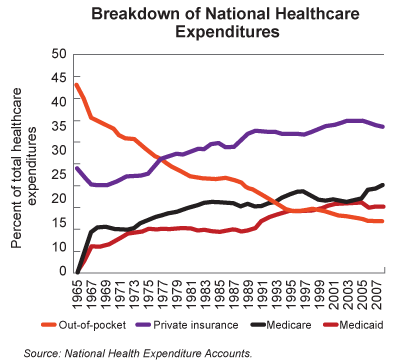I haven’t been enthusiastic about prior conservative free-market approaches as a solution to healthcare spending's pressure on the economy or individuals. Conservative proposals are, rather, a mitigator of overuse leading to overspending. Through “more skin in the game,” conservative proposals cause users to think twice about how much is really necessary.
The liberal approaches, by contrast, after the application of their best minds, are now proven to go in the opposite direction from cost reduction or improved healthcare. They lead to higher costs and just benefit a fraction of the uninsured, while vastly increasing the power of the government to impose its rationing generalizations upon individual needs – which vary -- while further insulating users from sensible involvement.
With HT to Instapundit, “The High Cost of No Price” from the American Enterprise Institute.
Economists have shown that if a good’s price is zero or decreasing, then the demand for this good will likely increase. In 2008, consumers were only directly responsible for 11.9 percent of total national healthcare expenditures, down from 43 percent in 1965, according to new data from the U.S. Department of Health and Human Services. This means that someone other than consumers pays roughly 88 percent of all healthcare costs, giving consumers little incentive to mind costs and much incentive to over-consume.



